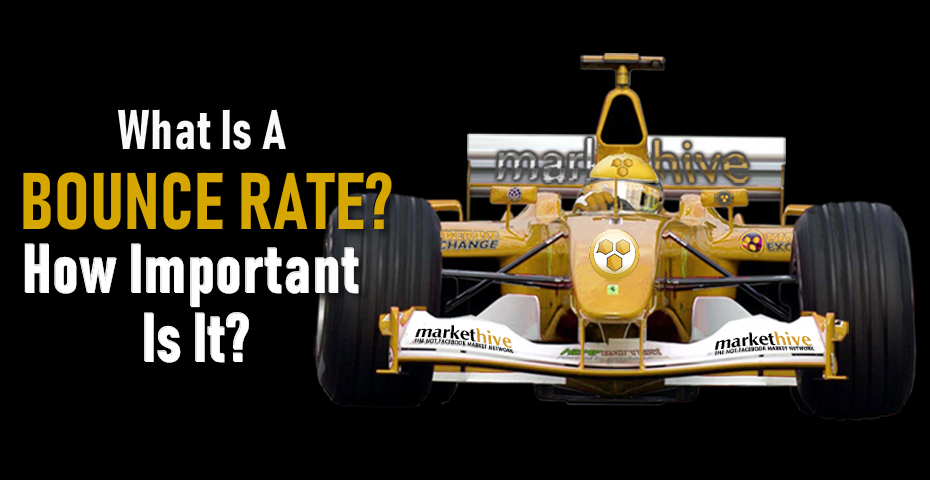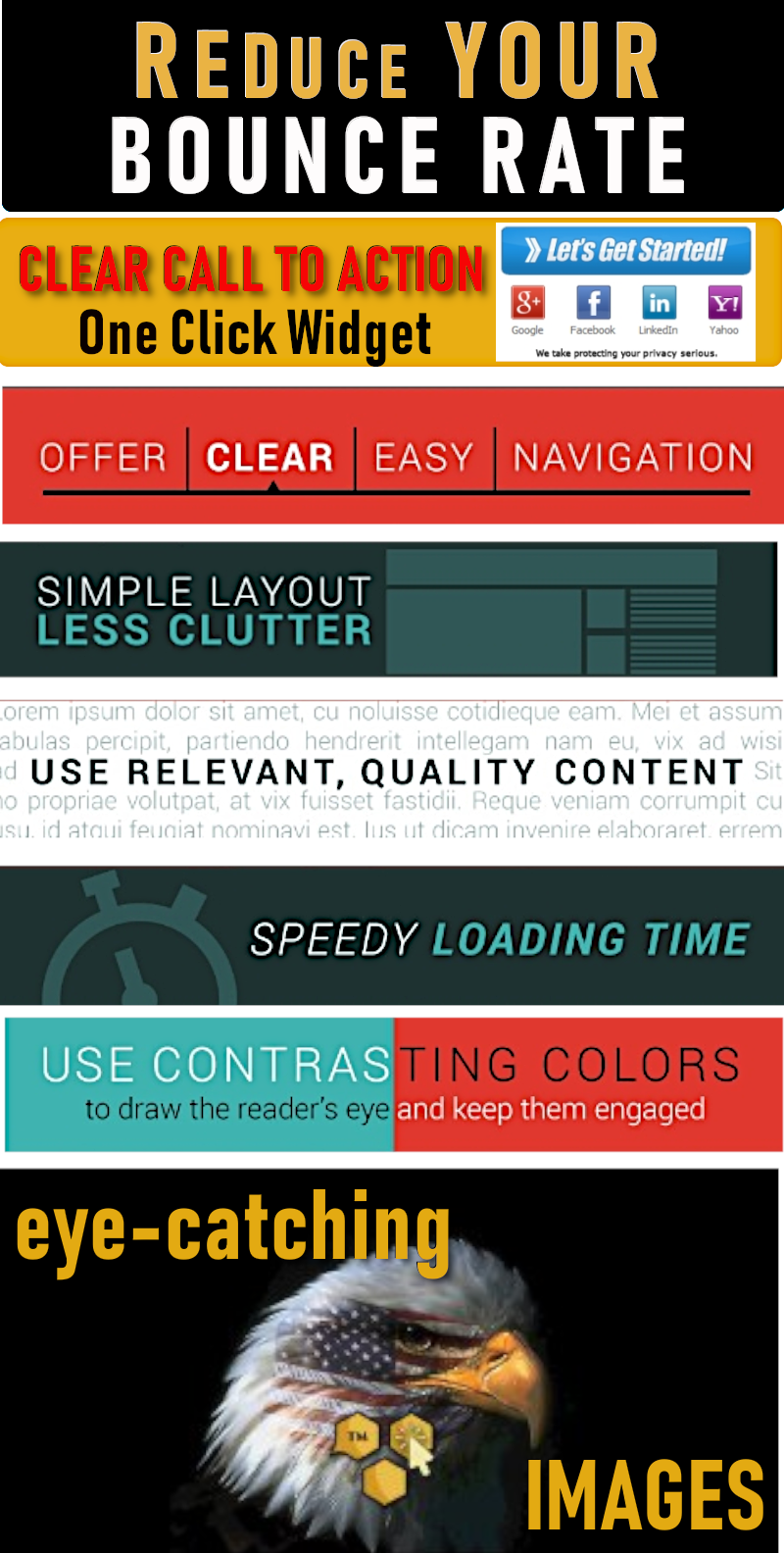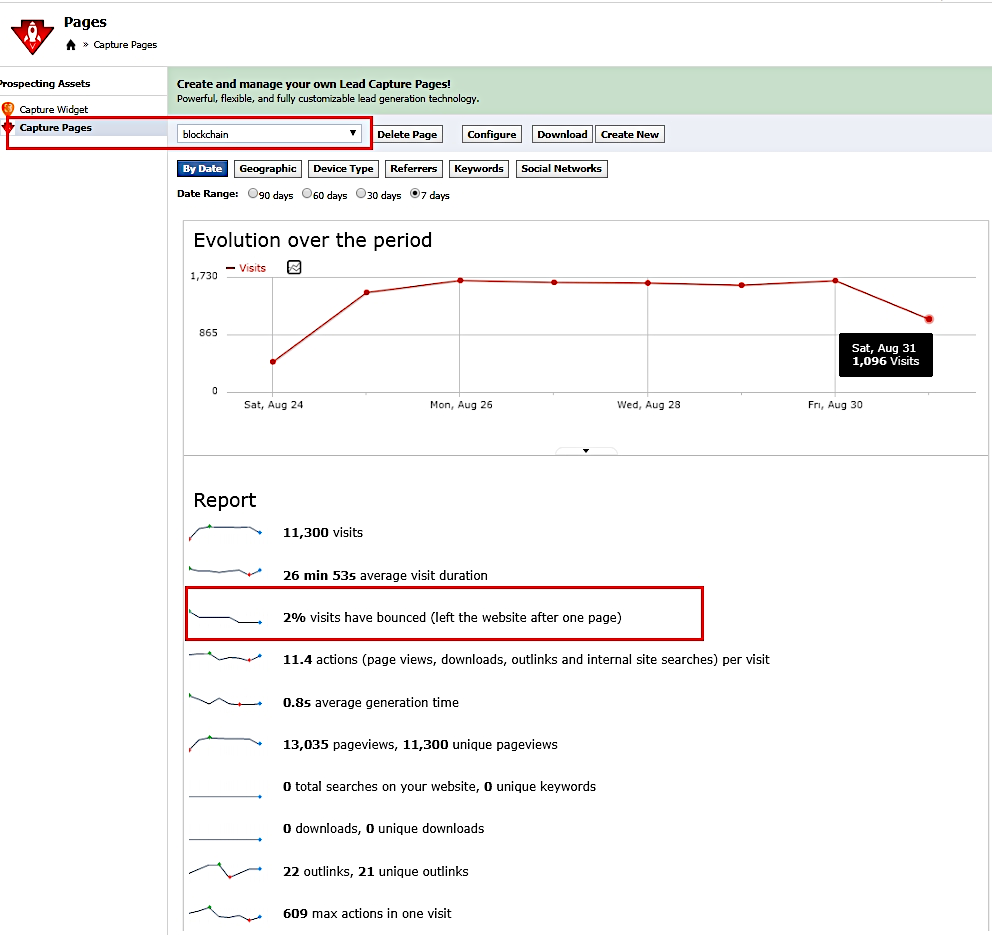What Is A Bounce Rate: How Important Is It?

What is a Bounce Rate?
Here is an easy way to think of the website bounce rate. Think of a ‘bounce’ as someone landing on your website, not clicking on any other pages and then leaving. The bounce rate is, therefore, the percentage of people that do this, rather than stay and take a look around your website. You want your bounce rate to be as low as possible, get them to engage and take the next step down your sales funnel.
There are some key factors to consider that determine your website bounce rate…
What Type Of Traffic Are You Attracting?
Are the visitors to your website specifically looking for your company, or are they looking for information? People who are familiar with you will bounce less than those who are in information-gathering mode. If you have an eCommerce store, does your traffic have high ‘commercial intent’? Are they ready to buy or simply researching for future purchases?
Writing really awesome blog posts can bring you lots of traffic, but this tends to be more information-seeking traffic as opposed to visitors with high commercial intent. Consequently, traffic to blog posts tends to have a higher bounce rate than traffic to your home page even if the average session duration is longer.
This shows the blogs are good quality and all that may be needed is a prominent call to action. Another way to keep them on longer is to have lots of relevant internal links so the visitors can delve deeper into a topic that interests them.
Click here to join, Markethive is Completely Free

What Causes Artificially High Bounce Rates?
Websites are frequently crawled by bots. Some are friendly and used to decide where to rank the website. Other bots are nasty and evil and are looking for content to scrape and load to spammy sites. Therefore the bounce rate is skewed because they are not real visitors.
The Sources Of Your Traffic.
Visitors that come from Google search results tend to ‘bounce’ much less than visitors from Facebook, for example. People are in very different frames of mind when they’re in work or play modes. Paid traffic sites can have an effect on your bounce rate due to the fact they are not organic or perhaps targeting the wrong audience pulling in unqualified traffic.
Sending the wrong people to your landing page will definitely result in a higher bounce rate. The right traffic is visitors that are primed to convert because they are in your target audience.
CEO and CMO of Markethive, Thomas Prendergast has done some excellent research on the target market for Markethive. Given the company is on blockchain and crypto-based, it makes sense to target people using the platforms illustrated in this research
The Design And Layout Of Your Website.
Sites that are difficult to navigate, confusing, or look old-fashioned all tend to have higher bounce rates than new clean, easy-to-use, mobile-friendly websites. Intrusive advertisements will not only have a negative effect but will also reduce the reputation of your landing pages. Also, auto-play videos are a strict no-no. Most people don’t like surprises or be bombarded as soon as they hit the site.
Headlines and subheadings are helpful to visitors to scan blocks of text quickly. If they cannot spot the content by scanning the headline or subheadings, they most likely will not take the time to search your site.
Images relating to the content make it easier to read. Text without images can be overwhelming and needs to be optimized for online reading. Writing on the web is very different than writing for written publications. Images break up the copy making it easier on the eyes.
Note: Images need to be relevant, inspiring and entertaining but not too many or too distracting. Avoid oversized images also. Combining images with great content simply reinforces what you want to say with the visual.
The Clarity Of Your Message.
Within the first few seconds of arriving at a website, visitors will automatically scan for content and design elements that communicate Credibility and Safety. The perceived safety of the site relates to the quality of the content and the appearance of the pages. If your site communicates safety, the visitor will be encouraged to stay, explore and may even take the next step.
Grammar and spelling errors on a site are very often perceived as not credible. It’s an absolute turn off for me when visiting sites. But the credibility and safety go well beyond grammar and spelling. The quality of content must quickly communicate that…
- You understand their problem
- You have a solution that could solve their problem
- They just need to take the next step
The next step is a clear call to action. Having a clear call to action means the visitor knows at a glance what their next step should be and where it is on the page. Making it easy and not asking for too much information will definitely work in your favor. Even asking for full name, phone number and email can result in a bounce or maybe even a false lead. A simple widget connected to their email account is a one-click verified lead that most people accept and is an easy, unobtrusive way to capture them.
If the visitor is not convinced that the site is credible, reliable and safe for any reason, they will bounce from the page within the first few seconds after arriving.
The Speed Of Your Website.
Slow-loading websites have high bounce rates and low conversion rates. It’s that simple. The golden rule is that people do leave a website if it takes more than 4 seconds to load.
These following factors tend to slow page load times:
- Cheap hosting
- Oversized images that can’t be downloaded quickly
- Too many images will cause too many requests on each page load
- Using custom fonts need to be downloaded for the visitor to read
- Too many fancy sliders and javascript effects that also must be downloaded to work.
What Is A Good Bounce Rate?
As a very broad rule of thumb, you’re aiming for a website bounce rate of under 40%. Between 40% and 55% is usually okay, whilst 55-65% shows significant room for improvement. This is a very simple and broad rule of thumb. There are certain circumstances like paid and social traffic, traffic hitting blog posts and also mobile traffic tends to bounce more. This is where it might be perfectly okay to have a bounce rate higher than these figures.
Click here to join, Markethive is Completely Free

Checklist of things to review on your landing pages…
- You sent the right people to your landing pages.
- You don’t bombard people with intrusive ads that distract from your primary call to action.
- Your headlines match the advertisement that promoted the landing page.
- Visitors can quickly find what they are looking for.
- Spelling and grammar have been checked out.
- The content provided is of high quality.
- It’s well designed with a clear message.
- The images don’t distract from the call to action.
- You have a clear next step for the visitor avoiding confusion.
- You avoid asking for too much information.
- Landing pages load under 2 seconds.
For Markethive Associates, You can find your bounce rate under Statistics either on your Profile Page or in Pages for your Widget and Capture Page stats. Markethive has made it very easy to read the analytics and keep on top of critical information that can help you improve where need to reach your end goals.

This service is available to all Associates, Free, and Upgraded. I find the capture pages and websites at Markethive fare very well with bounce rates and conversions.
Conclusion
Page layouts that are simple can communicate a lot of information in a short period of time. Focus on what you really want the visitor to do on your landing page. Be sure to make all the content, images and call to action buttons are gently nudging people in that direction.
Think of each landing page as a social contact. This is where you create a first impression that encourages the visitor to get to know you better, thereby improving your bounce rate, time on site and overall conversions.
Click here to join, Markethive is Completely Free
Click here to join, Markethive is Completely Free

Deb Williams
Market Manager for Markethive, a global Market Network, and Writer for the Crypto/Blockchain Industry. Also a strong advocate for technology, progress, and freedom of speech. I embrace "Change" with a passion and my purpose in life is to help people understand, accept and move forward with enthusiasm to achieve their goals.

